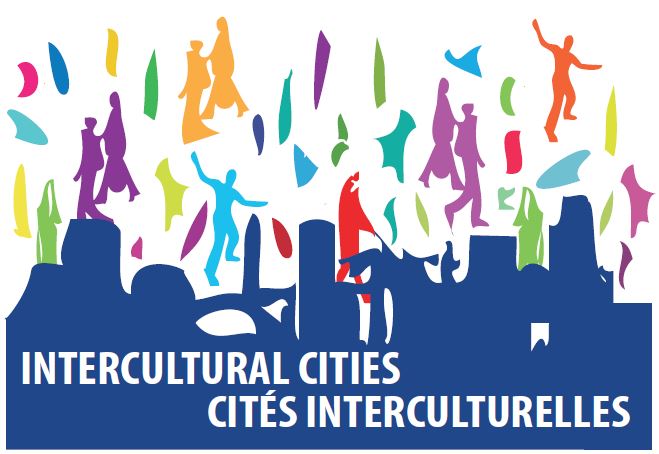Module 1 – Introduction
Intercultural cities develop policies and expertise in social inclusion and equality, prevention of discrimination, and raise awareness around important societal challenges. It is useful for decision-makers to also understand the potential biases and risks of artificial intelligence and learn about ways of mitigating such risks.
Definitions
Technology is helpful in our everyday lives and can assist us in faster, and sometimes more accurate decision-making. However, when using technology, and especially when local authorities use technology in a way which can significantly impact the quality of life of their residents, we must be sure to understand how the technology works, how it makes the decisions and which pitfalls this may include. This does not only relate to technology in general, but also more specifically to artificial intelligence (AI) and automated decision-making (ADM) which can take decisions independently, based on datasets which the technology has been trained on. Let’s kick off the training by looking at the definitions of the terminology we will be using.
Please take the time to familiarise yourself with the relevant section of the policy brief Preventing the potential discriminatory effects of the use of artificial intelligence in local services .
Regulations
In new technological fields which are developing fast it is not always easy to create regulations which can keep up with the speed of development. However, it is important to focus on the risks for society and individuals, looking at potential impact and problems which may occur through the use of the new technology. This is especially important when considering discriminatory bias, which in traditional forms suffer from a lack of monitoring and under reporting. In automated decision-making there is always a risk that discrimination may be further hidden in the automated processes or by a lack of transparency in the process itself.
Take some minutes to consider the following questions which may help you identify areas to address:
- Does your city use artificial intelligence and automated decision-making solutions in your everyday? In which areas?
- Could you explain to the residents of your city how the artificial intelligence and automated decision-making solution works?
- Do you know the regulations for artificial intelligence and automated decision-making in your country?
- Does your city have a policy on the topic?
- Do you think more regulation is needed on the topic and if so, why?
- What could your city do to create more transparency in the automated decision-making implemented in your city?
- Council of Europe Recommendation of the Committee of Ministers to member States on the human rights impacts of algorithmic systems - CM/Rec(2020)1
- Publication: Towards regulation of AI systems (2020)
- Guidelines on Artificial Intelligence and Data Protection (2019)
- Feasibility study on a legal framework on AI design, development and application based on Council of Europe standards, adopted by the CAHAI (2020)
1. What is Artificial Intelligence?
- (1)Computer programmes which use vast amounts of data to perform tasks and are able to evolve and learn independently
- Computer programmes which take decisions instead of people
- Computer networks which hold all the knowledge available
Although there are many definitions, artificial intelligence includes decision-making which would normally require human brainpower, such as such as making sense of spoken language, learning behaviours, or solving problems.
2. Why is automated decision-making an important term to be aware of in the field of anti-discrimination?
- It defines the decision-making process and shows where discrimination has occurred
- (1)It encompasses any type of technological solution which replaces or assists human decision-making
- It shows why technology should not be used to replace humans in decision-making processes
Automated decision-making according to the Directive on Automated Decision Making (Canada) includes any technology that either assists or replaces the judgement of human decision-makers. These systems draw from fields such as statistics, linguistics, and computer science, and use techniques such as rules-based systems, regression, predictive analytics, machine learning, deep learning, and neural nets.
3. Why is the use of artificial intelligence for making decisions about people (jobs, education, banking, benefits…) potentially risky?
- Because AI makes a lot of mistakes
- (1)Because AI algorithms use data from past human decisions which may be discriminatory
- Because decisions made by AI cannot be overturned by people
- Because we cannot explain why the AI took some decisions
The artificial intelligence will learn based on the materials on which it is trained - if the training data includes discriminatory practices, so will the artificial intelligence.
4. What is most important the regulations focus on?
- Mainly on how to repair any damages which have occurred
- (1)Mainly on how to prevent potential risks for society and individuals
- Mainly on how to prevent new technology which can be harmful when implemented
While the use of technology can be hugely beneficial, it is important all regulations aims to foresee and manage potential discriminatory risks for both society and individuals.
5. Why is it important for all public officials to have an understanding of how the automated decision-making works?
- (1)The authorities are always responsible for the decisions made and need to be able to explain how a decision was reached, also to ensure non-discrimination
- Public officials use automated decision-making every day and need to understand how the system works
- It is an obligation for all public authorities to know which technology is used
It is important all end-users of the technology are aware of the basis on which the automated decision-making reaches its decisions to ensure humans can draw informed conclusions and the concerned parties can receive information on how their situation has been decided on.



